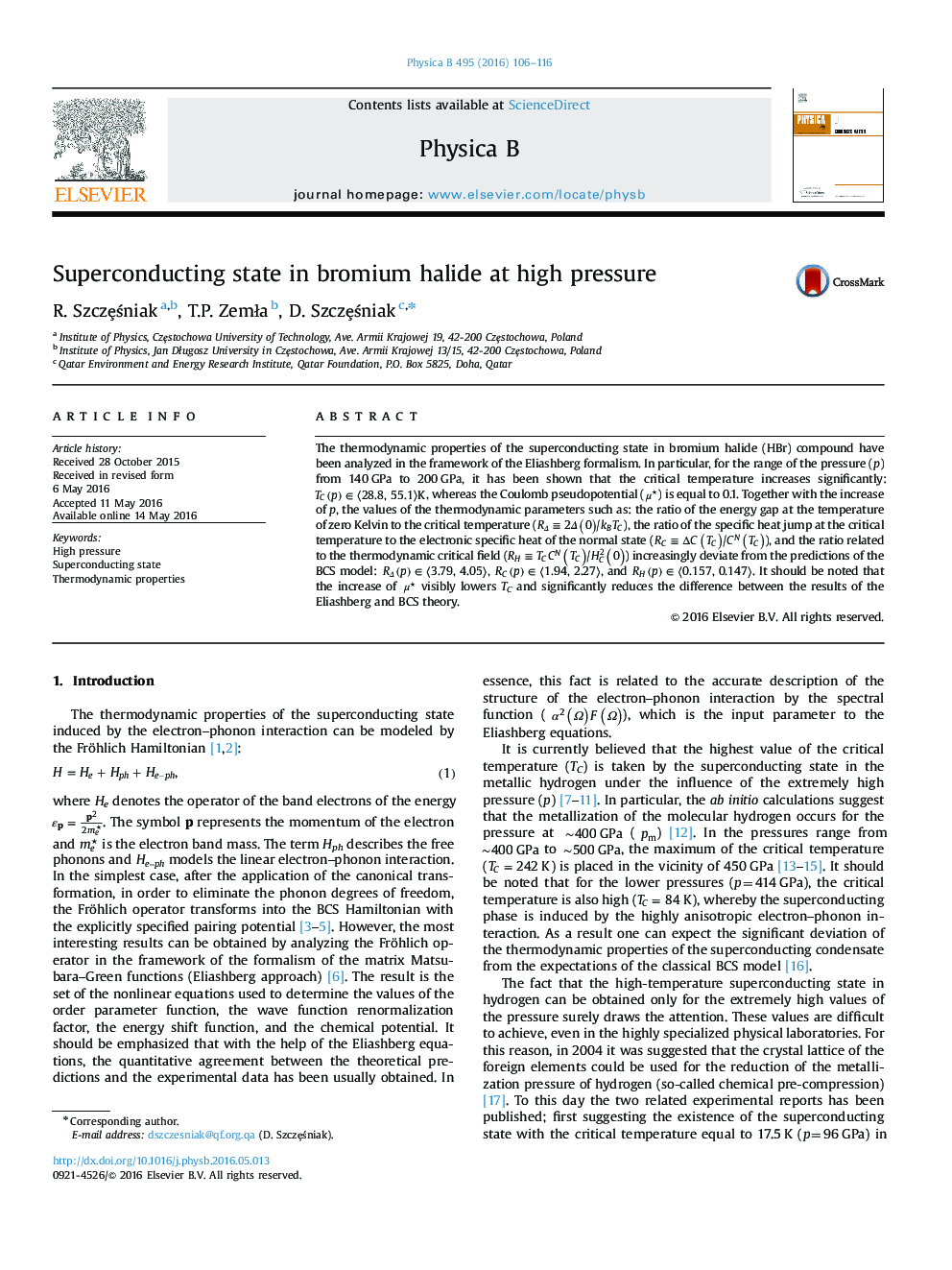| Article ID | Journal | Published Year | Pages | File Type |
|---|---|---|---|---|
| 1808324 | Physica B: Condensed Matter | 2016 | 11 Pages |
The thermodynamic properties of the superconducting state in bromium halide (HBr) compound have been analyzed in the framework of the Eliashberg formalism. In particular, for the range of the pressure (p) from 140 GPa to 200 GPa, it has been shown that the critical temperature increases significantly: TC(p)∈〈28.8,55.1〉KTC(p)∈〈28.8,55.1〉K, whereas the Coulomb pseudopotential (μ⋆μ⋆) is equal to 0.1. Together with the increase of p , the values of the thermodynamic parameters such as: the ratio of the energy gap at the temperature of zero Kelvin to the critical temperature (RΔ≡2Δ(0)/kBTCRΔ≡2Δ(0)/kBTC), the ratio of the specific heat jump at the critical temperature to the electronic specific heat of the normal state (RC≡ΔC(TC)/CN(TC)RC≡ΔC(TC)/CN(TC)), and the ratio related to the thermodynamic critical field (RH≡TCCN(TC)/HC2(0)) increasingly deviate from the predictions of the BCS model: RΔ(p)∈〈3.79,4.05〉RΔ(p)∈〈3.79,4.05〉, RC(p)∈〈1.94,2.27〉RC(p)∈〈1.94,2.27〉, and RH(p)∈〈0.157,0.147〉RH(p)∈〈0.157,0.147〉. It should be noted that the increase of μ⋆μ⋆ visibly lowers TC and significantly reduces the difference between the results of the Eliashberg and BCS theory.
